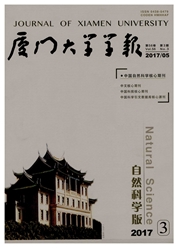

 中文摘要:
中文摘要:
金属污染是在有增加的工业化的中国的一个主要环境问题。金属毒性的预言由于处理的复杂金属和不同水的有机体的隐遁策略是极其挑战性的。在这评论,在这个区域取得的最近的进步被讨论。特别地,划分在最近的年里获得了识别的模型的 subcellular 被加亮。划分模型的 subcellular 看起来为在单细胞的浮游植物预言毒性可靠。理解金属在不同暴露政体下面在水的有机体绑在不同 subcellular 水池和他们的 ecotoxicological 意义的微分方法是重要的。欣赏那也是批评的每金属对每水的种唯一。尽管有在过去的 30 年取得的巨大的进步,大部分尚待被做充分在水的有机体理解金属毒性。
 英文摘要:
英文摘要:
Metal pollution has been a major environmental problem in China with the increasing industrialization. The prediction of metal toxicity is extremely challenging due to the complex metal handling and sequestration strategies of different aquatic organisms. In this review, the recent progress made in this area is discussed. In particular, the subcellular partitioning model which has gained recognition in recent years is highlighted. The subcellular partitioning model appears to be dependable for predicting the toxicity in unicellular phytoplankton. It is important to understand the differential ways that metals bind to different subcellular pools and their ecotoxicological significance in aquatic organisms under different exposure regimes. It is also critical to appreciate that every metal is unique to each aquatic species. Despite the huge progress made over the past 30 years, much remains to be done to fully understand metal toxicity in aquatic organisms.
 同期刊论文项目
同期刊论文项目
 同项目期刊论文
同项目期刊论文
 期刊信息
期刊信息
